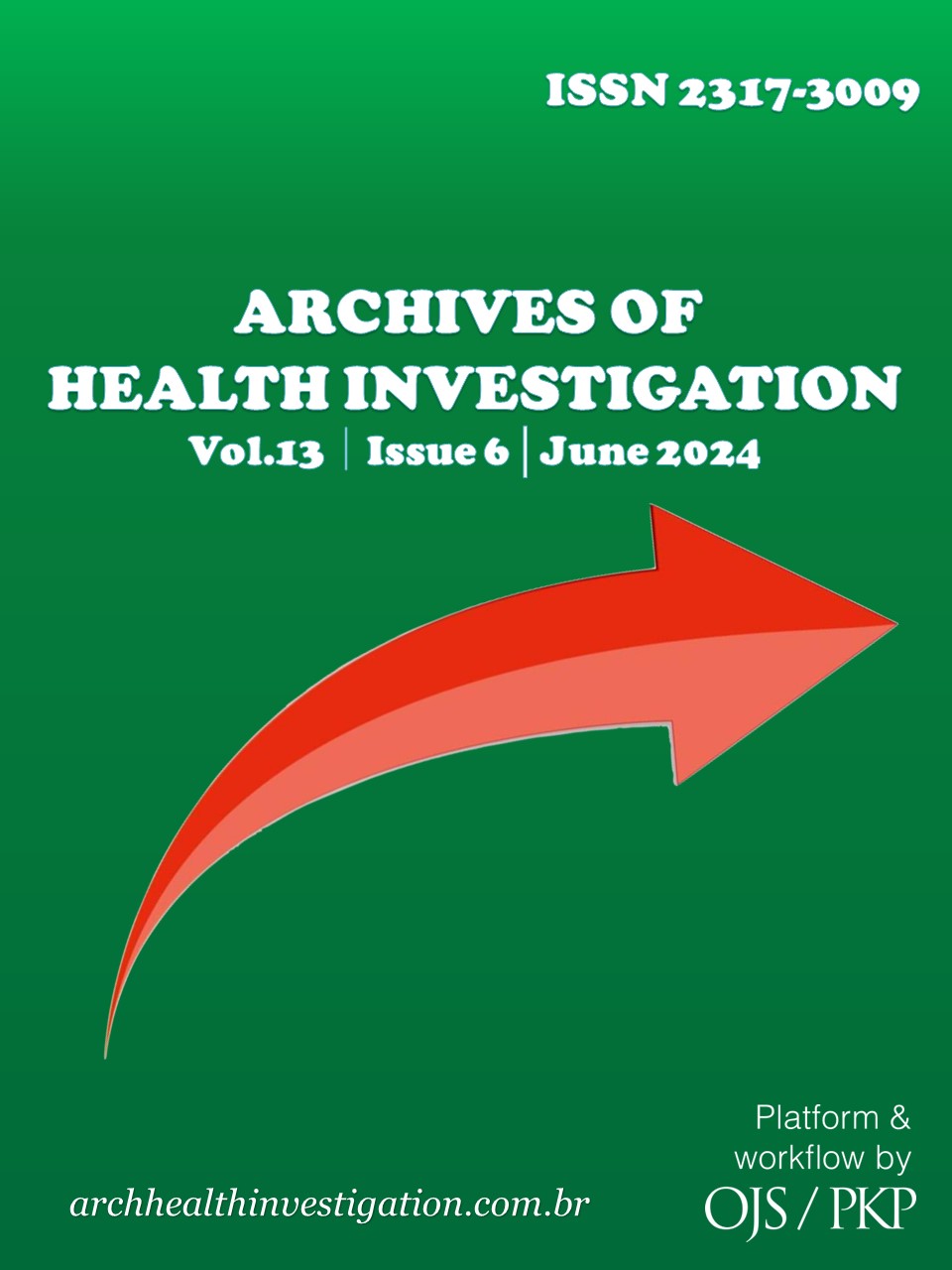Occlusal Splint Manufactured in the Digital Workflow as an Aid in the Treatment of Temporomandibular Disorder – Case Report
DOI:
https://doi.org/10.21270/archi.v13i6.6398Keywords:
Occlusal Splints, Temporomandibular Disorder, Computer-Aided Design, case reportAbstract
The use of Occlusal Splints as adjuncts in the treatment of patients with Temporomandibular Disorders is well-established in the literature and reaffirmed in clinical practice. For many years, clinical and laboratory fabrication using the analog method has yielded efficient clinical results. With the advent of the digital workflow in Dentistry, which reduces patient discomfort during the molding stages and speeds up the laboratory stages, questions have arisen about its applicability in the fabrication of occlusal splints. This paper presents a case report detailing the steps involved in the fabrication of an occlusal splint developed through the digital workflow. A patient presenting signs and symptoms of temporomandibular disorder was selected at the Integrated Clinic of the School of Dentistry at the Federal University of Alfenas. The clinical and laboratory stages were documented with photographic records of each clinical step. The results obtained showed a significantly reduced number of sessions and less occlusal adjustment of the splint.
Downloads
References
International Classification of Orofacial Pain, 1st edition (ICOP). Cephalalgia. 2020;40(2):129-221.
Schiffman E, Ohrbach R, Truelove E, Look J, Anderson G, Goulet JP et al. Diagnostic Criteria for Temporomandibular Disorders (DC/TMD) for Clinical and Research Applications: recommendations of the International RDC/TMD Consortium Network* and Orofacial Pain Special Interest Group†. J Oral Facial Pain Headache. 2014;28(1):6-27.
Chan NHY, Ip CK, Li DTS, Leung YY. Diagnosis and Treatment of Myogenous Temporomandibular Disorders: A Clinical Update. Diagnostics (Basel). 2022;12(12):2914.
Zhang ZP, Wang CC, Song LX, Liu L, Wang MQ, Liu JG. [Analysis of the clinical manifestations of 3 425 patients with orofacial pain of temporomandibular disorders]. Zhonghua Kou Qiang Yi Xue Za Zhi. 2021;56(12):1244-1252.
Patzelt SBM, Krügel M, Wesemann C, Pieralli S, Nold J, Spies BC, Vach K, Kohal RJ. In Vitro Time Efficiency, Fit, and Wear of Conventionally- versus Digitally-Fabricated Occlusal Splints. Materials (Basel). 2022;15(3):1085.
Zhang SH, He KX, Lin CJ, Liu XD, Wu L, Chen J, Rausch-Fan X. Efficacy of occlusal splints in the treatment of temporomandibular disorders: a systematic review of randomized controlled trials. Acta Odontol Scand. 2020;78(8):580-89.
Albagieh H, Alomran I, Binakresh A, Alhatarisha N, Almeteb M, Khalaf Y, Alqublan A, Alqahatany M. Occlusal splints-types and effectiveness in temporomandibular disorder management. Saudi Dent J. 2023;35(1):70-9.
Denardin ACS, do Nascimento LP, Valesan LF, Da Cas CD, Pauletto P, Garanhani RR, Januzzi E, Hilgert LA, de Souza BDM. Disocclusion guides in occlusal splints on temporomandibular disorders and sleep bruxism: a systematic review. Oral Surg Oral Med Oral Pathol Oral Radiol. 2023;135(1):51-64.
Berli C, Thieringer FM, Sharma N, Müller JA, Dedem P, Fischer J, Rohr N. Comparing the mechanical properties of pressed, milled, and 3D-printed resins for occlusal devices. J Prosthet Dent. 2020;124(6):780-86.
Grymak A, Waddell JN, Aarts JM, Ma S, Choi JJE. Evaluation of wear behaviour of various occlusal splint materials and manufacturing processes. J Mech Behav Biomed Mater. 2022;126:105053.
Sun X, Feng Y, Jiao Y, Liu W. Fully digital workflow for the fabrication of occlusal stabilization splints based on individual mandibular movement. J Dent. 2024;141:104826.
Hardy RS, Bonsor SJ. The efficacy of occlusal splints in the treatment of bruxism: A systematic review. J Dent. 2021;108:103621.
Algabri R, Alqutaibi AY, Elkadem AHE, Maher EA. Patient’s satisfaction and muscles activity after management of temporomandibular disorders patients using computer-aided design/computer-aided manufacturing versus conventional occlusal splints (randomized clinical trial). Int Dent Med J Adv Res. 2017;3:1-8.
Alqutaibi AY, Algabri R, Ibrahim WI, Borzangy S. Does the facebow affect the outcome of CAD/CAM occlusal splint. Randomized clinical trial. Saudi Dent J. 2021;33(7):628-34.
Almeida MVC, Teodoro MKR, Veloso NA. IMPRESSÃO 3D E SUA APLICABILIDADE NA REABILITAÇÃO ORAL. BJSCR. 2020;33:105-
Veneza P, Lo Muzio L, De Furia C, Torsello F. Digital manufacturing of occlusal splint: From intraoral scanning to 3D printing. J Osseointegration. 2019;11:535-9.
Wesemann C, Spies BC, Schaefer D, Adali U, Beuer F, Pieralli S. Accuracy and its impact on fit of injection molded, milled and additively manufactured occlusal splints. J Mech Behav Biomed Mater. 2021;114:104179.
Nota A, Ryakhovsky AN, Bosco F, Tecco S. A full digital workflow to design and mill a splint for a patient with temporomandibular joint disorder. Appl Sci. 2021;11:372.
Berntsen C, Kleven M, Heian M, Hjortsjö C. Clinical comparison of conventional and additive manufactured stabilization splints. Acta Odontol. Scand. 2018;4:81-9.
Perea-Lowery L, Gibreel M, Vallittu PK, Lassila L. Evaluation of the mechanical properties and degree of conversion of 3D printed splint material. J Mech Behav Biomed Mater. 2021;115:10425.


